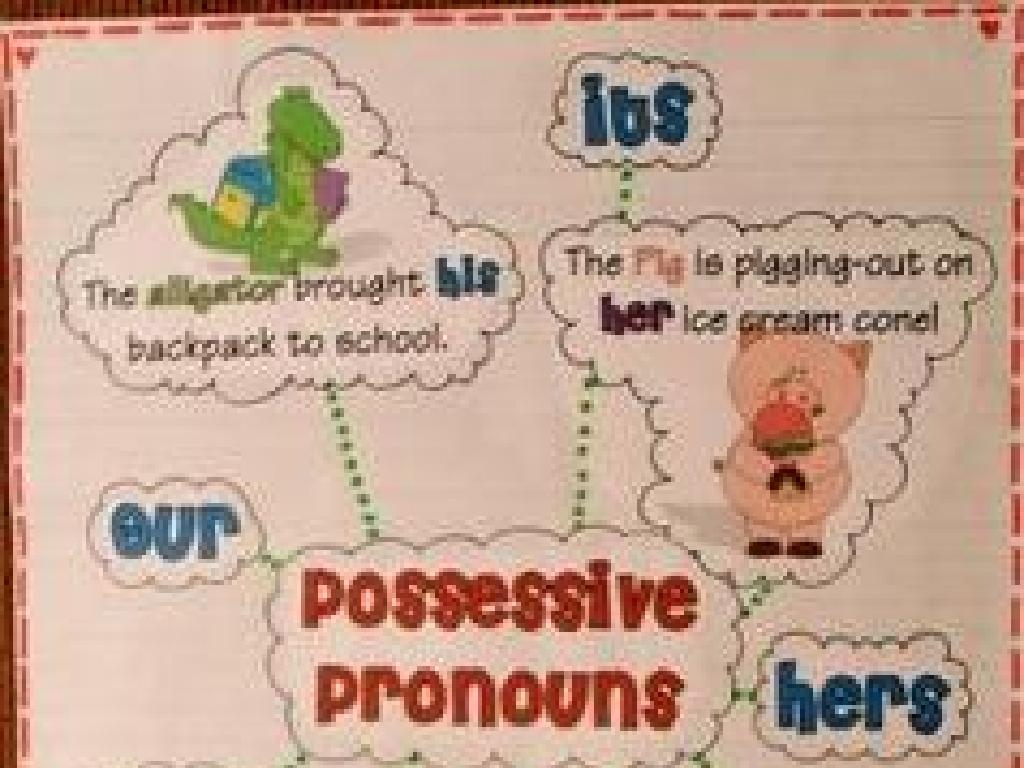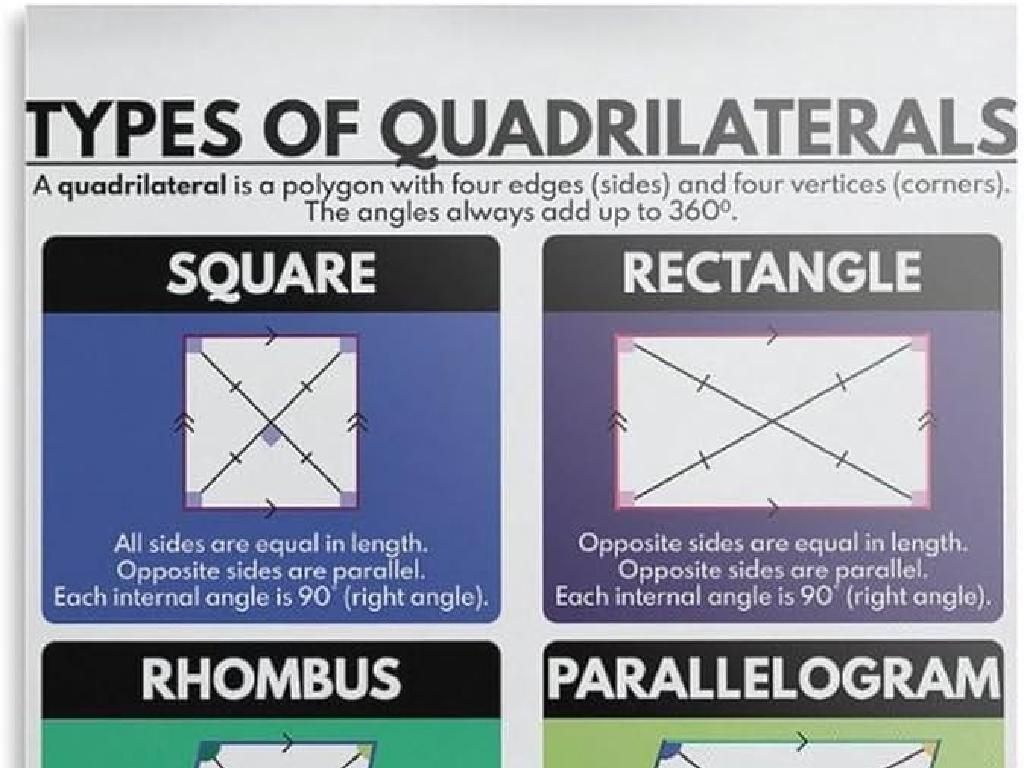Moss And Fern Life Cycles
Subject: Science
Grade: Eighth grade
Topic: Plant Reproduction
Please LOG IN to download the presentation. Access is available to registered users only.
View More Content
Moss and Fern Life Cycles
– Non-flowering plant reproduction
– Mosses and ferns reproduce without flowers or seeds
– Moss life cycle overview
– Mosses use spores to reproduce, starting with a spore that develops into a gametophyte
– Fern life cycle stages
– Ferns begin with spores that grow into a gametophyte, which then produces a sporophyte
– Differences from flowering plants
– Flowering plants use seeds, while mosses and ferns use spores for reproduction
|
This slide introduces students to the unique reproductive cycles of mosses and ferns, which are non-flowering plants. Unlike flowering plants that reproduce through seeds, mosses and ferns utilize spores. The moss life cycle begins with a spore that grows into a gametophyte, which then produces new spores. Similarly, ferns start their life cycle with a spore that develops into a gametophyte, eventually giving rise to a sporophyte that will produce spores. It’s crucial to highlight the differences between these plants and flowering plants to deepen students’ understanding of plant diversity and reproduction. Engage students by asking them to compare and contrast these cycles with the life cycle of a flowering plant they are familiar with.
Plant Reproduction: Mosses and Ferns
– Defining Plant Reproduction
– The process by which plants produce offspring.
– Types: Sexual and Asexual
– Sexual involves seeds; asexual uses spores or fragments.
– Moss Reproduction Overview
– Mosses use spores released from capsules to reproduce.
– Fern Reproduction Overview
– Ferns have a two-stage life cycle involving spores.
|
This slide introduces the concept of plant reproduction, which is essential for the survival and propagation of plant species. It’s important to clarify that plant reproduction can occur in two main ways: sexually, through the fertilization of seeds, and asexually, without fertilization, often through spores or fragmentation. Mosses and ferns are prime examples of non-flowering plants that reproduce via spores. Mosses produce spores in capsules that, when mature, release them into the environment. Ferns have a more complex life cycle with two distinct stages: the sporophyte and the gametophyte. The sporophyte stage produces spores, while the gametophyte stage involves the growth of a new fern from the spore. Encourage students to think about the advantages and disadvantages of each type of reproduction and how these strategies help plants survive in various environments.
Moss Life Cycle: Reproduction Without Flowers
– Explore the world of mosses
– Understand gametophyte & sporophyte stages
– Gametophyte: green, leafy stage; Sporophyte: stalk with spore capsule
– Moss reproduction mechanisms
– Mosses use spores, not seeds; water needed for sperm to reach eggs
– Significance of non-flowering reproduction
|
This slide introduces students to the unique life cycle of mosses, which are non-vascular plants. Unlike flowering plants, mosses do not produce seeds but reproduce using spores. The life cycle consists of two main stages: the gametophyte, which is the dominant, green, and leafy stage where sexual reproduction occurs, and the sporophyte, which grows from the gametophyte and releases spores. Highlight the importance of water for moss reproduction, as it allows sperm to swim to the egg. Discuss the ecological significance of mosses and their adaptation to environments where other plants might not thrive. Encourage students to think about the advantages and disadvantages of reproducing without flowers.
Fern Life Cycle: An Overview
– Introduction to ferns
– Fern life cycle stages
– Gametophyte: the sexual phase, Sporophyte: the asexual phase
– Fern reproduction mechanism
– Ferns do not produce seeds; they reproduce via spores
– Spores: Fern’s reproductive unit
– Spores are tiny cells that can grow into new ferns
|
This slide introduces the complex life cycle of ferns, which is distinct from many other plants due to its two separate life stages: the gametophyte and the sporophyte. Unlike flowering plants, ferns do not reproduce with seeds but use spores that can be found on the undersides of their fronds. Understanding the fern life cycle is crucial for comprehending plant diversity and reproduction. The gametophyte stage is characterized by the production of sex cells, while the sporophyte stage involves asexual reproduction. Students should learn how these stages are interconnected and how spores play a vital role in the propagation of ferns. Encourage students to observe ferns in their natural environment or bring a fern sample to class to identify the spores.
Comparing Moss and Fern Life Cycles
– Similarities in life cycles
– Both have alternating generations: sporophyte and gametophyte stages.
– Differences in life cycles
– Mosses are non-vascular, while ferns have a vascular system.
– Absence of flowers
– Mosses and ferns reproduce via spores, not flowers.
– Water’s role in reproduction
– Water is essential for the sperm to swim to the egg in both plants.
|
This slide aims to compare and contrast the life cycles of mosses and ferns, which are both non-flowering plants. Students should understand that despite differences, such as mosses being non-vascular and ferns having a vascular system, both share a common reproductive strategy involving spores and alternating generations. The absence of flowers in their life cycles is a significant point of discussion, as it leads to the reliance on water for reproduction. The sperm of both mosses and ferns require a film of water to reach and fertilize the egg, making their habitat choices crucial for survival. Encourage students to think about how these plants have adapted to their environments and the evolutionary advantages of their reproductive strategies.
Moss and Ferns in Ecosystems
– Importance of moss and ferns
– They provide food and habitat, aid in soil formation and water retention.
– Habitats for moss and ferns
– Thrive in moist, shady environments like forests and wetlands.
– Moss and ferns’ ecosystem roles
– They act as pioneer species, prevent erosion, and support biodiversity.
|
This slide aims to highlight the ecological significance of moss and ferns. Students should understand that these plants are not just simple ground covers but play vital roles in their ecosystems. Moss and ferns serve as food and habitat for various organisms, help in soil formation, and retain water in their environments. They are commonly found in moist and shady areas, where they contribute to the health of the ecosystem by acting as pioneer species that colonize bare substrates, preventing soil erosion, and supporting biodiversity by providing habitats for other species. Discuss the concept of pioneer species and how these plants prepare the environment for future plant growth. Encourage students to think about local examples of moss and ferns and their roles in those ecosystems.
Class Activity: Observing Moss and Ferns
– Assume the role of a botanist
– Observe samples under a microscope
– Examine moss and ferns up close to see cell structure
– Identify life cycle stages
– Look for spores, gametophytes, and sporophytes
– Document observations
– Record findings in your science journal
|
In this hands-on class activity, students will step into the shoes of botanists to explore the life cycles of moss and ferns using microscopes. Provide a variety of moss and fern samples for students to examine. Guide them to identify different stages of the plant life cycles, such as the spore-producing sporophyte and the gamete-producing gametophyte. Encourage detailed observations and documentation in their science journals. Possible activities include sketching what they see, labeling the life cycle stages, or comparing the two types of plants. This practical experience will enhance their understanding of plant reproduction and the complexity of life cycles in non-flowering plants.
Recap: Moss and Fern Life Cycles
– Review moss life cycle stages
– Mosses cycle through sporophyte and gametophyte phases.
– Recap fern reproduction process
– Ferns have a distinct alternation of generations.
– Significance of non-flowering plants
– Non-flowering plants play key roles in ecosystems.
– Open floor for questions
|
This slide aims to summarize the key points of moss and fern life cycles, emphasizing their unique reproductive strategies. Mosses alternate between sporophyte and gametophyte phases, while ferns reproduce through spores and have a separate gametophyte generation. Highlight the ecological importance of non-flowering plants, such as preventing soil erosion and providing habitats. Conclude the presentation by encouraging students to ask questions or express their curiosities about the topic, fostering an interactive learning environment. This is also an opportunity to assess student understanding and clarify any misconceptions.
Homework: Moss and Fern Life Cycles
– Draw moss and fern life cycles
– Label each stage of the cycles
– Write about moss/fern ecosystem roles
– Consider how moss/ferns contribute to their habitat, like providing shelter or maintaining soil moisture.
– Study for a plant reproduction quiz
|
This homework assignment is designed to reinforce the concepts learned about moss and fern life cycles. Students are expected to visually represent the stages of these life cycles, ensuring they understand the process of plant reproduction in non-flowering plants. Additionally, they should reflect on the ecological importance of these plants, such as their role in preventing soil erosion or as a water reservoir. The paragraph will help them articulate their understanding and connect it to broader ecological systems. Lastly, students should prepare for a quiz on plant reproduction, reviewing all the material covered in class, including the alternation of generations and the differences between vascular and non-vascular plants.






